By: Thorsten Overgaard. March 13, 2019.
Add to Flipboard Magazine.
Leica - The Freedom Tool
For the photo enthusiast, no camera offers more history, exclusivity, optical quality, and feeling of accomplishment than the Leica. This is a camera that was invented 100 years ago, and which to a large degree looks and feels same, now as a digital camera.
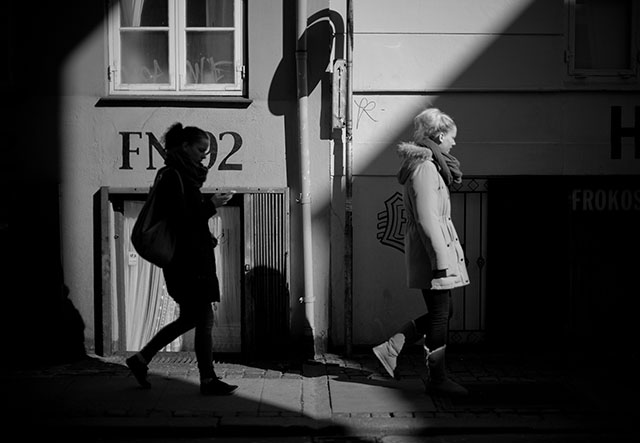
“Shadowland” by Thorsten von Overgaard.
The photographer walks every day with his camera. When he sees a possible photo, he moves quickly with his feet while his hands prepare the camera. He takes the photo and he’s gone in an instant as if it never happened. That’s how you get that frozen moment of life, where people look like they were living life and as if the photographer was never there. Only the photograph exists to document that it actually did happen.
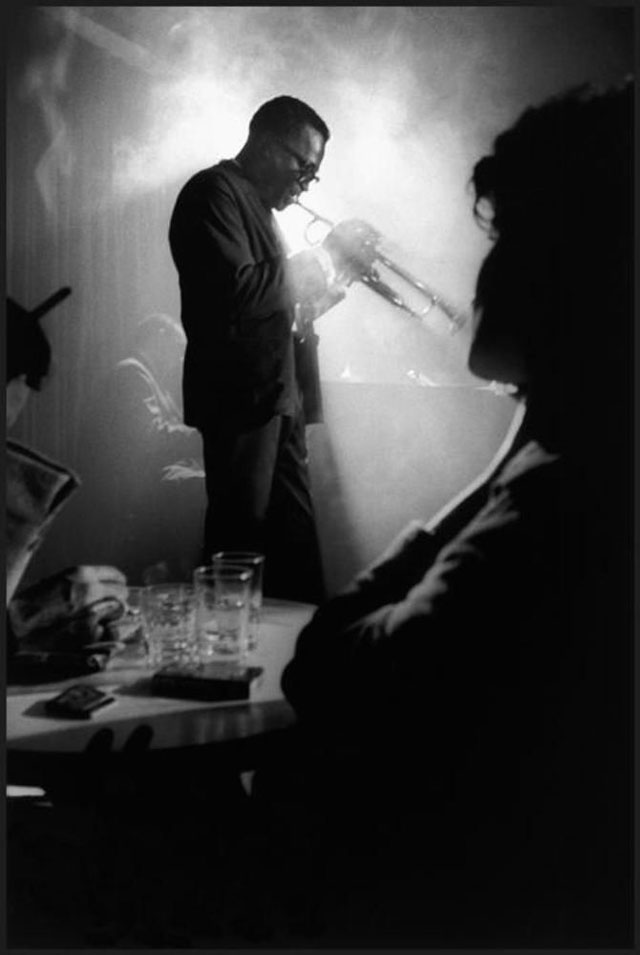
The Leica made photography discrete, unnoticed and silent: Miles Davis at Birdland 1958 by Dennis Stock.
The grandfather of 35mm photography
Who would have known that photography would be one of the most popular subjects in today’s world? Without the wide interest of photography, Instagram would not exist, as an example of modern technology fueled by photography.
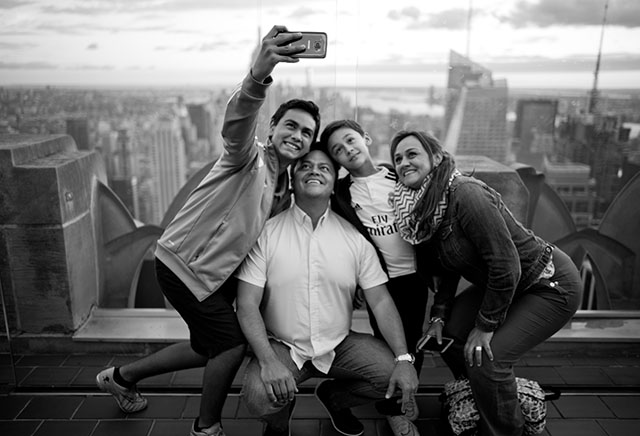
A Columbian family in New York City. Photo: © Thorsten Overgaard.
When photography was young in the 1800’s, cameras were large wooden boxes on a tripod, and the men behind them were just as much engineers and chemists as they were photographers. It was a complicated affair with heavyweight equipment!
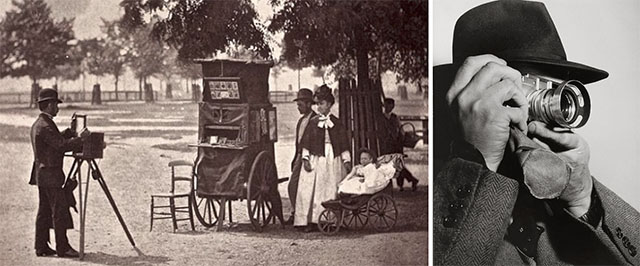 Photography in the 1800’s (left) and Leica photography in the 1900’s (right).
Photography in the 1800’s (left) and Leica photography in the 1900’s (right).
The invention of the Leica in 1925 changed history for reportage photography, and all photography. The small Leica camera with excellent lenses had as great an influence on photography as the Ford T had for driving in 1908, and the iPhone for communicating and sharing in 2007.
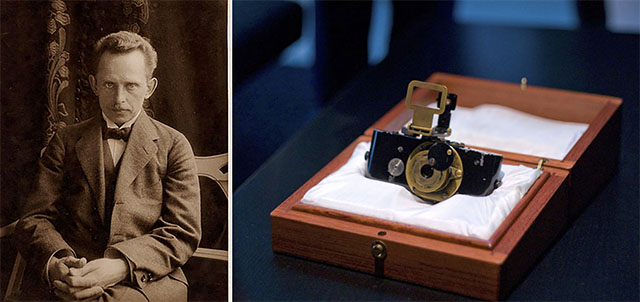
The inventor of the Leica, Oskar Barnack (1879-1936) and the first Leica prototype (right) from 1911.
Oskar Barnack (1879-1936) was the inventor of the Leica. He worked for the Leitz family in Wetzlar, an hour outside Frankfurt in Germany, and he decided to make a small metal box with lens to test film types for the movie industry. Working with the prototype in 1911, he realized it could also be used for still photography.
With a small camera like that you could climb mountains easily, and you could move around in the streets without anyone noticing you. The Leitz family decided – in the midst of hyperinflation and overall stagnation in the aftermath of the first World War – to launch the “small camera” in 1925.
Many professional photographers were against the idea of a small camera with a small negative, but Leitz succeeded against all odds. Fast-forward, the 35mm film format with its 24x36mm picture size became the standard for all photography from the 1930’s and onward. In today’s digital photography, the Leica picture format is simply what we know as “full frame”.
The Leica was a revolution in many ways, but mainly it made photography portable and the photographer able to work fast and unnoticed. This was the foundation for all modern photojournalism and the now popular art of “street photography”.
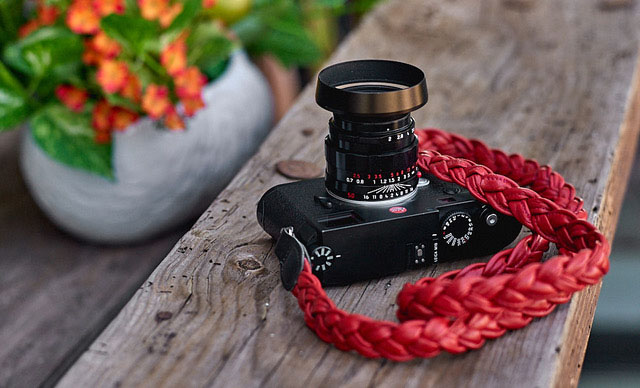
The Leica M10 digital camera of 2019. © Thorsten Overgaard.
Geniuses at work
Leica’s fortune through the last 100 years seem to be that they have had an unbroken chain of geniuses’ working in the company, as well as a management that to a large degree has insisted that the original simplicity was that goal to maintain.
Leica was blessed to have a visionary owner, Ernst Leitz, who hired both the inventor of the Leica camera, Oskar Barnack, and the optical designer, Max Berek. This continued with Dr. Mandler who was both an extraordinary optical designer, and CEO of the sister factory that the Leitz established in Canada after WW II to ensure that Leica wouldn’t be as sensitive to world wars as it had been the case with WWI and WWII.
While the Leica company was passed on to sons and grandsons, the line of optical geniuses continued at Leica. A continued line of genius optical designers, allowed to make magic, with Peter Karbe as the current optical chief.

Award-winning Danish television videographer Morten Albek in Rome with his Leica. Photo: Thorsten Overgaard.
Ups and downs
Leica was founded in an age where it was natural that sons and grandsons would continue in the footsteps of previous generations. That was true for the employees in Leica, as well as for the family who owned the factory.
But when the Japanese cameras took over the market in the 1970’s the grandsons of the original founder were sleeping at the steering wheel. As a result, the family had to sell most of the company in the 1980’s. Going from the world leader in photography in the 1960’s to being a comma in a piece of German poetry in 1980’s about how great things once were, Leica Camera AG almost ended its days by 2005.
But then a curious thing happened, another family fortune stepped in. Andreas Kaufmann from Austria and his two brothers had inherited a family fortune of some billions overnight. Andreas Kaufmann wanted to make something good out of the fortune, so the brothers invested in Leica Camera AG.
In a matter of the last 12 years, the brand has become a successful camera manufacturer of the original Leica, now in a digital version. And they added new familiar products to the lineup. Also, Leica opened a new hip headquarter, expanded into cinema lenses and lenses for the world’s number one smartphone brand, Huawei.
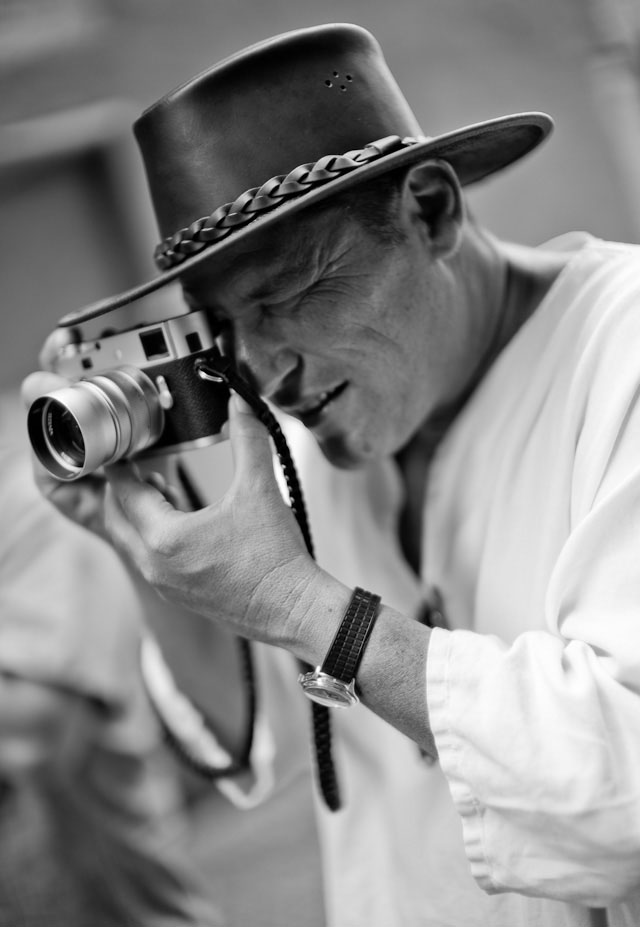
Israeli dot com entrepreneur Elan Susser with his Leica. © Thorsten Overgaard.
The Freedom Tool
The founder of Leica, the Leitz family, helped more than hundred Jewish families flea to the US during World War II, by claiming to the Nazis that they were instrumental for Leica in New York. That’s another story for another day. Hundreds of Jewish families arrived in New York with a Leica around the neck as their starting capital for a new life away from religious discrimination, genocide and the German indoor sport, ‘berufsverbot’ (which is professional discrimination based on membership of groups).
The Leica is created in the spirit that everybody can express any idea easily, and that is how it has worked ever since: The Leica camera has been instrumental for enlightening, spreading truth and freeing the people behind and in front of the camera, ever since.
The famous photo "Napalm girl" of the 9-year old girl, was made on a Leica in 1972 by Nick Ut of Associated Press. The image changed the worlds view on the Vietnam war, and won the Pulitzer Price.
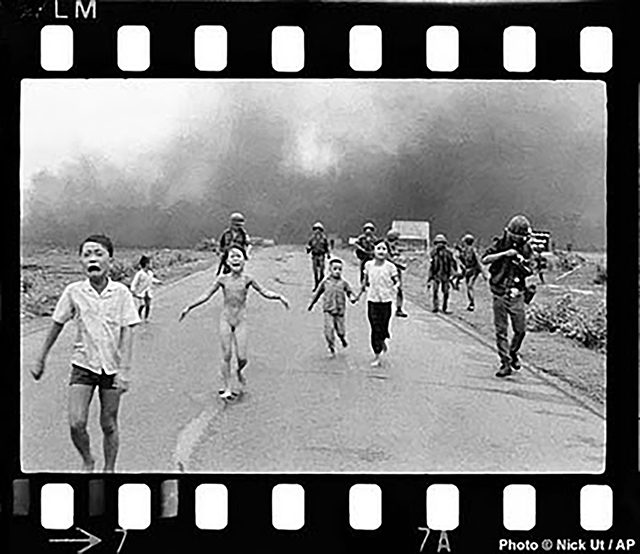
The Power of Simplicity
The Leica is probably the simplest camera in existence. Even today’s digital Leica camera has exactly the very few features that are fundamental for photography, and nothing more.
The Leica is simple, extremely well-built, and equipped with the best optics that money can buy.
The Leica represents a statement that is unique.
For those who can buy everything, buying something this simple is the ultimate luxury. "Simplicity is the ultimate sophistication", as Leonardo da Vinci said.

War photographer Jan Grarup in Afghanistan 2013 with his Leica.
Things gets better
One of the secrets of the recent success of Leica is that they are allowed to stay true to the founder’s ideas. As Peter Karbe, the chief lens designer expresses it:
“Minimize. That is the concept and thinking behind everything we do. Look at the M system. We aim to keep it compact, and each element has a certain task and need to be selected carefully. That is the general description and the reason we try so hard. We have a history of ideas.”
Another interesting detail at Leica is that it’s the R&D who runs the show. In an age where most products and manufacturing methods aims at faster, cheaper and based on a short-lived lifespan of products that feed the constant demand of the mass market, the Leica products are developed in relatively small numbers, at exorbitant prices. It goes like this: The lens designer aim for the best design of a new lens, or in optimizing an existing model, and production cost is not really any of his consideration. Image quality is.
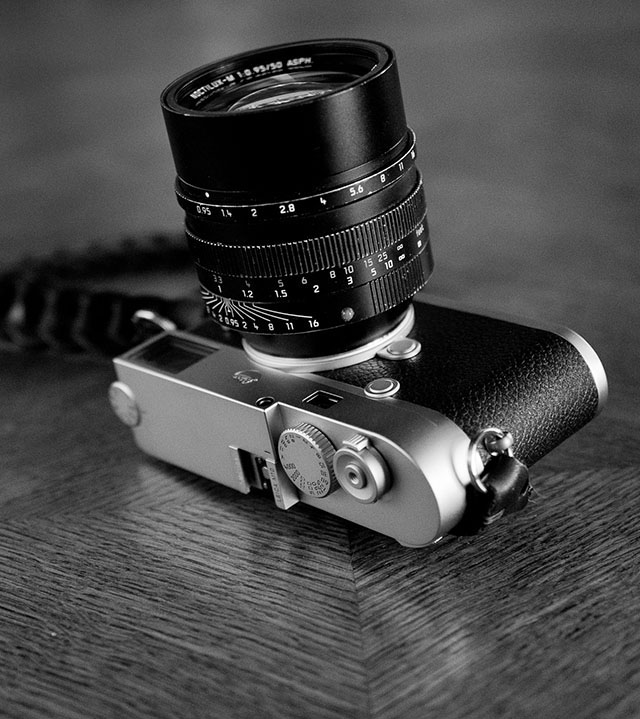
The Leica M10 with the extremely light-sensitive lens, Noctilux f/0.95 that Leica made from 1966 as the world’s fastest standard lens, and it’s been optimized ever since with new improved models.
That was how Leica came up with ‘the best 50mm lens’ a few years ago, that retails for $8,000. The project had been in the mind of the chief designer Peter Karbe for a while, but he was sure nobody would buy a lens that expensive. Then the CEO asked him to finalize it, and the result was that the Leica users lined up in a one year waiting list for ‘the lens that would so expensive nobody would buy it’.
That’s another miracle of Leica. When you are the only manufacturer in the world that offers the optimum, there’s a market of people who are willing to pay premium for a quality that is not offered nowhere else.
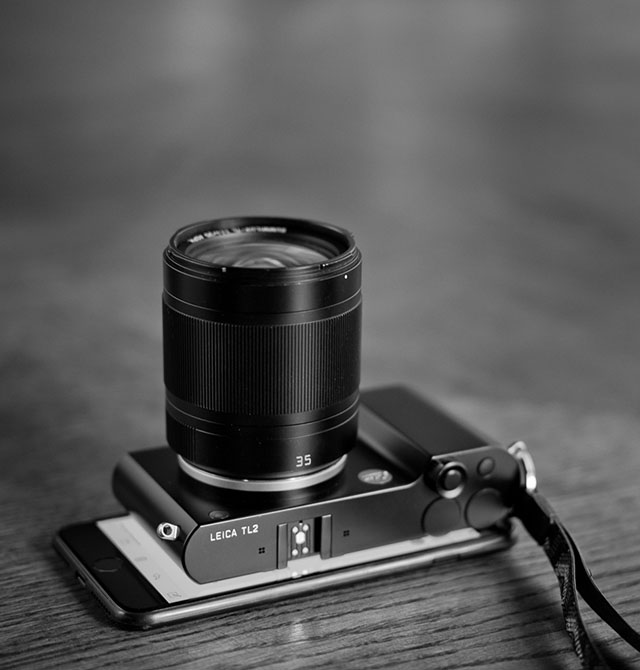
Innovation: Leica recently made a try to “invent photography all over again”, making the Leica TL2 model that uses a very simple interface with touch. An iPhone with a 24MP sensor and a real lens, you could say, for the generation used to direct things via a touch screen. Here on top of an iPhone X for comparison. Photo: Thorsten von Overgaard.
Meeting the Leica
When you first stumble upon a Leica, you may rightfully think, "What is so great about this?" realizing you just traveled back to a time where trains were driven by steam. And when you notice the price tag of close to $8,000 for the camera body and another $5,000 for a lens to go with it, your surprise will not be less.
There is almost a secret society of Leica. One goes into a camera store and asks to hold a Leica M for a few minutes, then go home and sleep on it. If you wake up the next morning and the first thought in your mind is that sensation of holding a Leica, there is no way back!

Photographer Sheikh Khalid Al-Thani in the desert of Qatar with his Leica. Photo: Thorsten Overgaard.
Either you feel the connection to the 100 years of German engineering and the ultimate in precision and lens technology ... or you don't. The initial choice is as simple as that.
For those who feel it, the modern Leica cameras are the most coveted and sought-after cameras on the market. Often there is a waiting list for the new Leica cameras and lenses, making it an even more intriguing product for those who can usually buy anything. Old, rare vintage examples can fetch millions of dollars at auctions.
"You had me at Hello"
The force is so strong that I have met quite a few grown men who were certain they had read all available reviews of all cameras, and could quote every important feature a modern camera must have... and yet their credit card mysteriously surfaced on the counter and paid for a Leica that didn't have any of those important features. And I have met single mothers with three children who bought a Leica on the spot, simply out of love for the wonder ... and lack of ability to resist.
The Leica brings out the lust for creating by the mere touching of the camera. The ones I meet always carry a smile and a Leica. Many will testify that it is not just a camera but that it improves their life quality. "You complete me," as another famous movie quote goes; and which is what most Leica users whispers to their camera, when nobody is listening.
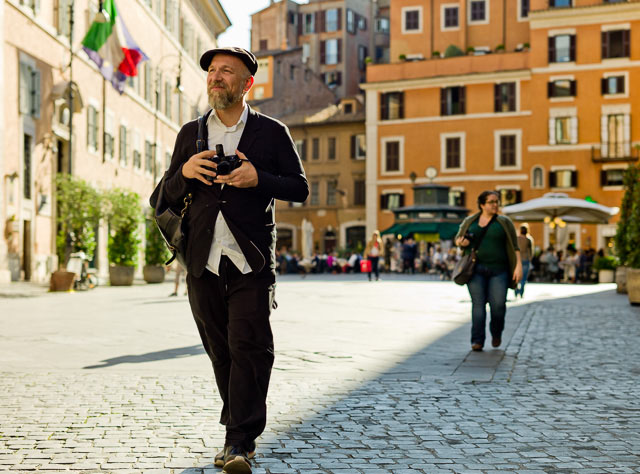
Graphic designer Manuel Studer with his Leica in Rome. Photo: © Thorsten Overgaard.
More to come...
I hope you enjoyed today's Story Behind That Picture. As always, feel free to email me with questions, ideas and suggestions.
![]()
